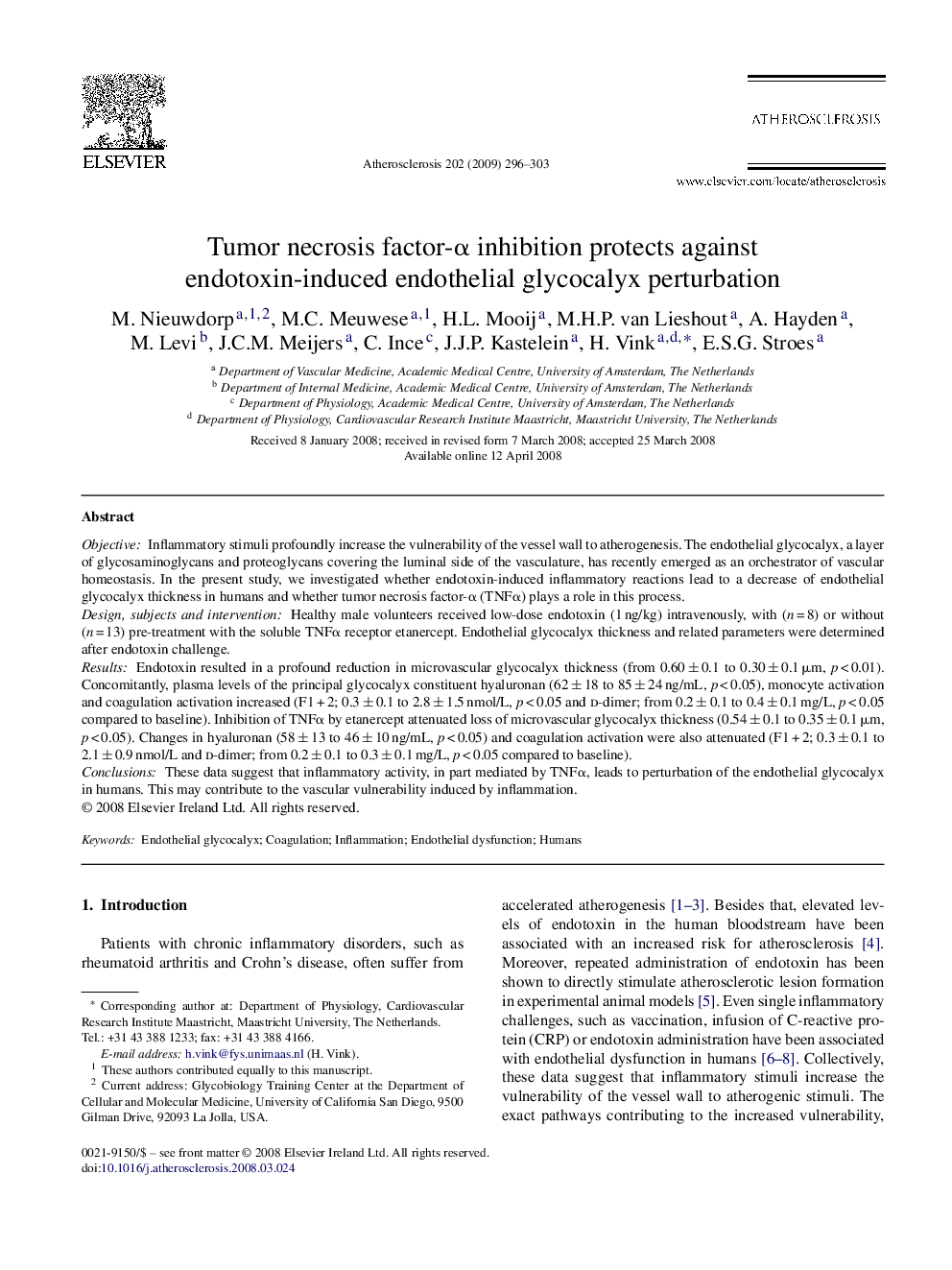| کد مقاله | کد نشریه | سال انتشار | مقاله انگلیسی | نسخه تمام متن |
|---|---|---|---|---|
| 2893797 | 1172420 | 2009 | 8 صفحه PDF | دانلود رایگان |

ObjectiveInflammatory stimuli profoundly increase the vulnerability of the vessel wall to atherogenesis. The endothelial glycocalyx, a layer of glycosaminoglycans and proteoglycans covering the luminal side of the vasculature, has recently emerged as an orchestrator of vascular homeostasis. In the present study, we investigated whether endotoxin-induced inflammatory reactions lead to a decrease of endothelial glycocalyx thickness in humans and whether tumor necrosis factor-α (TNFα) plays a role in this process.Design, subjects and interventionHealthy male volunteers received low-dose endotoxin (1 ng/kg) intravenously, with (n = 8) or without (n = 13) pre-treatment with the soluble TNFα receptor etanercept. Endothelial glycocalyx thickness and related parameters were determined after endotoxin challenge.ResultsEndotoxin resulted in a profound reduction in microvascular glycocalyx thickness (from 0.60 ± 0.1 to 0.30 ± 0.1 μm, p < 0.01). Concomitantly, plasma levels of the principal glycocalyx constituent hyaluronan (62 ± 18 to 85 ± 24 ng/mL, p < 0.05), monocyte activation and coagulation activation increased (F1 + 2; 0.3 ± 0.1 to 2.8 ± 1.5 nmol/L, p < 0.05 and d-dimer; from 0.2 ± 0.1 to 0.4 ± 0.1 mg/L, p < 0.05 compared to baseline). Inhibition of TNFα by etanercept attenuated loss of microvascular glycocalyx thickness (0.54 ± 0.1 to 0.35 ± 0.1 μm, p < 0.05). Changes in hyaluronan (58 ± 13 to 46 ± 10 ng/mL, p < 0.05) and coagulation activation were also attenuated (F1 + 2; 0.3 ± 0.1 to 2.1 ± 0.9 nmol/L and d-dimer; from 0.2 ± 0.1 to 0.3 ± 0.1 mg/L, p < 0.05 compared to baseline).ConclusionsThese data suggest that inflammatory activity, in part mediated by TNFα, leads to perturbation of the endothelial glycocalyx in humans. This may contribute to the vascular vulnerability induced by inflammation.
Journal: Atherosclerosis - Volume 202, Issue 1, January 2009, Pages 296–303